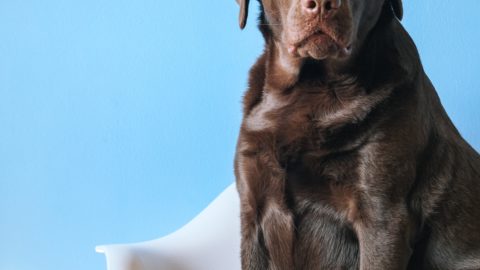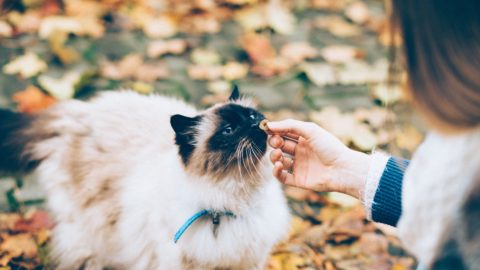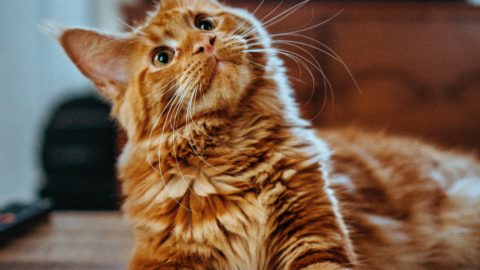In this excerpt from her behavior advice column, The Teacher’s Pets, Dr. Megan Maxwell, CAAB, reviews some intervention strategies for addressing canine separation anxiety.
Amos was a handsome and well-behaved 2-year-old Airedale. His owners lived in a large home with a big fenced-in yard and Amos enjoyed days full of chasing squirrels and spending time with his devoted owner Susan. Susan had taken Amos through puppy obedience classes, where he had done very well, and she tended to take him with her wherever she went for most of his first year. Because he was so calm in the car and well-behaved in public, Susan saw little reason to leave him home alone. When he was occasionally left home alone for short periods, Susan left him in the fenced-in yard and there had been no problem.
Soon after Amos’s first birthday, Susan got a full-time job. In all her focus on this new venture, she didn’t suspect that the transition would be much trouble for Amos. Amos still slept in the crate that Susan had used to help with housetraining, so she decided she would crate him while she was at work, just to be sure he wouldn’t get into any trouble. When she got home that evening, she heard Amos whining and was shocked to find him standing in his crate, soaked in drool and panting wildly. The bars on his crate door, never touched before, were now bent and chipped, and his blanket had been shredded. She let him out right away and he jumped on her, then ran in circles as she let him outside. As she cleaned up his crate area, she wondered if she had crated him for too long and decided she would try leaving him out of the crate the next day. Returning home from work the next day, she worried she had made the wrong choice when she saw only slobbery nose and paw prints all over the bay window where her Venetian blinds had been hanging that morning…
Our first task was to determine how to manage Amos in the short-term while Susan had to continue with her 40-hour work week. We knew we were looking at some weeks of behavior therapy ahead, and we needed a placement for Amos while we worked to change his behavior. We located a dog sitter who was able to keep Amos in her home while Susan was at work over the coming weeks. We then had to identify those rewarding items and activities that could be used in a behavioral intervention plan. Susan noted that Amos most loved peanut butter, dog treats, going for walks, and being by her side. We decided to utilize all of these as positive consequences for calm, independent behavior. I taught Susan to be mindful of those times when Amos was off on his own, sleeping in another room or in his open crate, and to go to him at these times and do one of the following: announce it was time for a walk and take him out, lay down with him for a 5-minute belly rub, or bring his toy and initiate a 5-minute game of chase or tug. In this way, we used Amos’s favorite activities to reward and strengthen calm, relaxed, independent behavior that occurred at a distance from Susan.
We also began daily crate desensitization sessions that involved Susan closing Amos in his crate with a toy stuffed with peanut butter and dog treats and leaving him in there while she milled about the house – out of the room but not out of the house at first. She returned within 10 or 15 minutes, before he had finished the food, and let him out of the crate, removing the food toy at the same time. When we saw that he was consistently calm and focused on his food toy while crated, she began leaving the house to walk around the yard before returning to let him out of the crate and to remove his food toy. From here, we gradually increased the duration of time he was crated with his food toy and also the distance she went from the house, having Susan first walk around the yard, then walk around the block, then sit in her car with the engine on, then take the car around the block. At each stage, our initial goal was to keep Amos excited about his food toy and to return before he lost interest in it so that he might actually be a little disappointed his mom had returned because he lost his delectable peanut butter toy!
We set up Susan’s laptop on a video chat facing Amos’s crate so that we could monitor Amos’s behavior in our absence. Soon we began extending our departures just beyond the time it took for Amos to lose interest in or finish his food. Once he finished the food, we observed that he would circle in his crate a bit and look around as if waiting for us, but he did not immediately start to whine or paw at the crate. So we returned home in time to reward this calm behavior by greeting him and letting him out of the crate before anxious behavior began.
Within 6 weeks, Susan was able to leave Amos inside the crate for up to 2 hours on evenings or weekends and saw no signs of anxiety. We then had Susan practice short outings on weekend mornings that simulated all of her workday morning routines but instead of loading Amos into the car to take him to the sitter, Susan loaded him into his crate with his food toy and left to go around the block. Success! Amos went to his food toy with excitement and was still working on it when she returned. Once we saw this successful response was sustained across sessions, we had Susan leave him for half-days during the week, coming home for lunch at first, and then for full days. All of Susan’s hard work paid off, and Amos was finally taught what pups typically learn when they are much younger – that being home alone is nothing to worry about!






